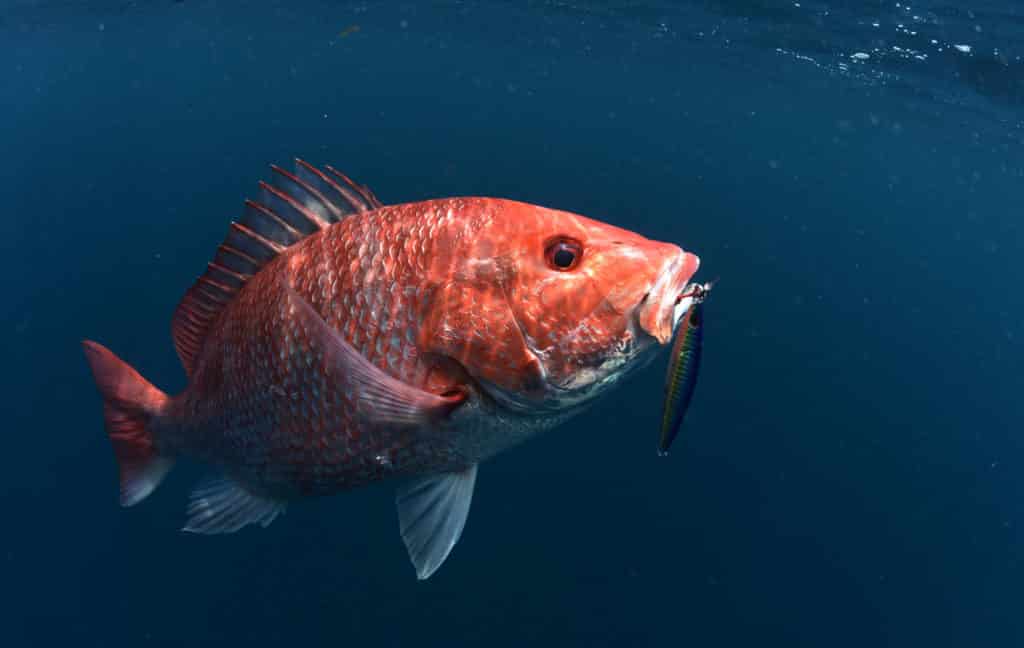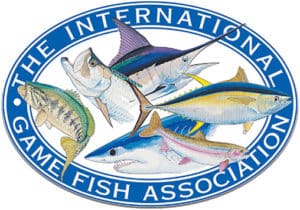Contact us if your target is Red Snapper in Costa Rica
See our Red Snapper Photo Gallery

Red Snapper
Snapper fishing in Costa Rica is a popular activity, as the country is home to a variety of snapper species. These fish are known for their hard fighting nature and delicious meat.
The most common snapper species found in Costa Rica include:
- Red Snapper
- Yellowtail Snapper
- Cubera Snapper
- Lane Snapper
Snapper fishing in Costa Rica is typically done using bait or lures, and can be done from a variety of boats, including center console boats, pangas, and sportfishing yachts. Some anglers prefer to use live bait, such as mullet or sardines, while others prefer to use artificial lures.
The best time to fish for snapper in Costa Rica is typically from May to September when the water is warmer and the fish are more active. However, they can be caught year-round.
Snapper can be found in various depths, from inshore areas such as rocky points, ledges and reefs to deep sea areas such as drop-offs and canyons. They are also commonly found around structures such as shipwrecks, oil platforms and artificial reefs.
Snapper fishing trips can be arranged through local fishing charters or sportfishing companies. These companies typically provide all necessary equipment, including rods, reels, and bait, as well as experienced crew members to help anglers locate and catch fish.
It is important to note that in Costa Rica, there are strict regulations on the size and number of snapper that can be caught, and it is important to be aware of and follow these regulations in order to promote sustainable fishing practices.
The Red Snapper are found from Northern Mexico to Central Peru coasts. They are bottom dwellers that are a prize catch for anglers.
Characteristics of the Red Snapper
Special characteristics of the Red Snapper include a spiny dorsal fin which stretches almost to the tail of the compressed body. The anal fin is sharply pointed with a long triangular snout and a prominent reddish iris. The teeth are small, canine-like with medium-large scales. The half-moon shaped tail usually has dark edge. The beautiful red and bright pinkish color on the back and head, fading to a silvery whitish below makes this species an excellent fish trophy mount. Youngsters (under 10 inches in length) has a black spot on each side of the body.
Where to find a Red Snapper in Costa Rica?
The Red Snapper is a bottom dweller and the preferred places to find them are wrecks, seamounts and coral reefs, . Adults are more often found in structures or rocky bottoms at depths of 50-400 ft and the younger fish under 10 inches prefer shallow waters over sandy and muddy bottoms. They’re often found in schools of the same size. They can reach length of 3 ft. and weigh as much 35 lbs or more. However the average size caught is 1-2 ft. in length and weigh less than 10 lbs.
Why fishing Red Snapper in Costa Rica?
Mackerel fishing season in Costa Rica is year round.
Important notes about the Red Snapper
It is possible to find larger adults traveling alone, but they are typically found in large schools close to shore around wrecks, reefs, rocky outcroppings or other types of cover. Although Mackerel can occasionally be found off-shore around piers or other structures, that is not typically the case in Costa Rica.
Methods for catching Red Snapper
They can be fished with different techniques such as:
Bottom Fishing Inshore/Offshore
Bottom fishing is the go-to technique for countless anglers out there, and it’s easy to see why. Known for its fun, action-packed outings, it can produce catches of pretty much any size., bottom fishing involves lowering a weighted hook or lure to the bottom of the water column. Sounds simple enough, right? But there’s a bit more to it than that.
One of the things that makes bottom fishing so addictive is the fact that you can practice it in an endless number of ways. Depending on the water you’re fishing, and what you want to catch, you can choose from a number of fishing styles. You can use different bait and tackle, and play around with different presentations.
Trolling
This may be the most frequent because of the small boats that move around the roosterfish fishing areas. It is true that fishing for rooster fish with this modality presents a little less emotion than the previous one, but it is the most effective. With this technique we can find areas where the active specimens are located, where we can then apply other more lively fishing methods. You can also do bottom fishing at the points where we find the active fish.



